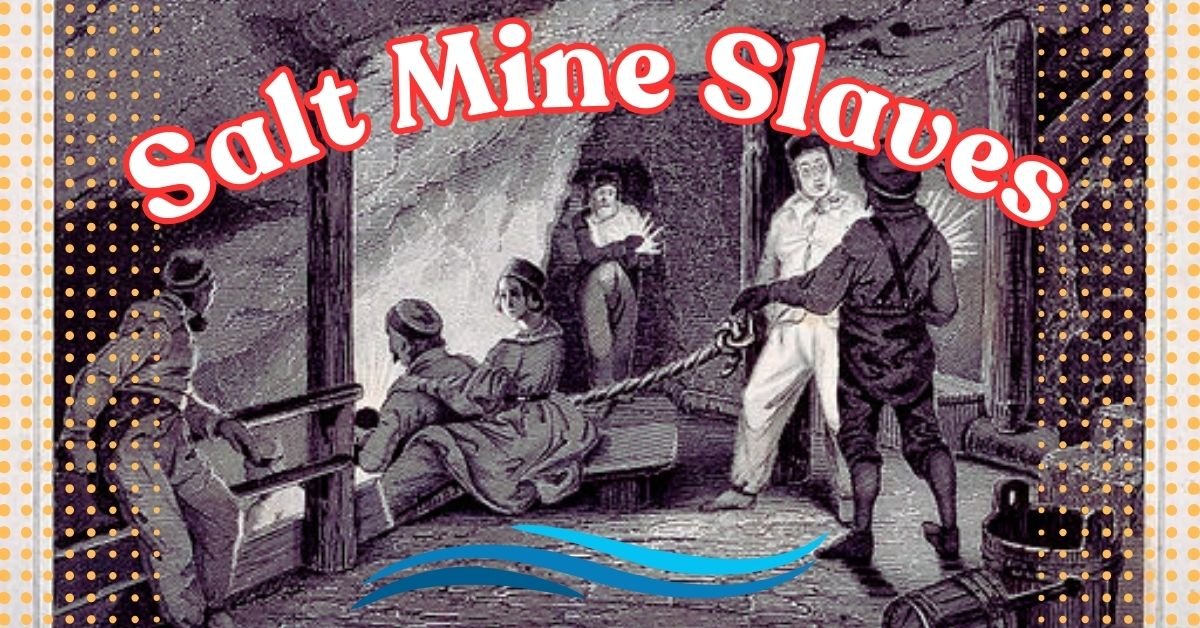Salt Mines Slave
Salt, a mineral now ubiquitous on dining tables, was once one of the most prized commodities in the world. Its extraction played a crucial role in shaping economies and building empires, but it also came with a tragic human cost: the enslavement of countless people. This article explores the salt mines slave history, uncovering the often-overlooked realities of the brutal labor that powered these mines. By shedding light on this dark chapter of history, we gain a deeper understanding of how this valuable resource influenced societies and the lives of those who were forced to extract it.
The Origins of Salt Mining
Salt mining has a long history that dates back thousands of years. Ancient civilizations recognized the value of salt, and its extraction became a significant industry. Salt deposits were found in various parts of the world, from the deserts of North Africa to the mountains of Europe and the salt flats of Asia. The process of mining salt was labor-intensive and often dangerous, requiring workers to dig deep into the earth or evaporate seawater in harsh conditions. Despite the risks, the value of salt made it a profitable venture for those who controlled the mines.
In ancient Egypt, salt was highly prized and used in mummification rituals, as well as in the preservation of food. The Egyptians mined salt from dry lake beds and extracted it from brine wells. Similarly, the Chinese developed advanced techniques for salt production, using natural brine sources and boiling the water to extract the salt. In Europe, salt mines were discovered in the Alps, where miners would carve out vast caverns to extract the precious mineral. As the demand for salt grew, so did the need for labor, leading to the widespread use of slaves in salt mines.
Slavery in Salt Mines
Slavery became an integral part of the salt mining industry as the demand for labor-intensive extraction methods increased. Slaves were often captured during wars, bought from slave traders, or forced into servitude due to debt. Once enslaved, they were subjected to brutal working conditions in the mines. These mines were often located in remote and inhospitable regions, far from the comforts of civilization, making escape nearly impossible.
In many parts of the world, salt mines became synonymous with suffering and death. Slaves working in these mines endured back-breaking labor, often with little to no rest. The conditions were harsh, with extreme temperatures, poor ventilation, and the constant threat of cave-ins. Many slaves worked in the mines until they died, their bodies worn out by the relentless toil. The salt dust they inhaled caused severe respiratory issues, and the constant exposure to brine often led to skin diseases. The life expectancy of a slave in a salt mine was tragically short, and few survived more than a few years of this grueling existence.
Salt Mines in Ancient Egypt
One of the earliest examples of slavery in salt mines can be found in ancient Egypt. The Egyptians were pioneers in salt mining, extracting the mineral from dry lake beds and brine wells. The labor-intensive nature of this work led to the use of slaves, who were forced to endure the harsh desert conditions to extract the valuable resource. Salt was essential to the Egyptian economy, used for preserving food, in religious rituals, and as a form of currency.
Slaves in ancient Egypt’s salt mines faced extreme conditions. The heat of the desert was relentless, and the work was physically demanding. Slaves were often worked to death, with little regard for their well-being. The salt itself posed additional dangers, as the sharp crystals could cause painful injuries, and the constant exposure to brine led to debilitating skin conditions. Despite these hardships, the demand for salt continued to drive the use of slave labor in these mines.
European Salt Mines and Slavery
In Europe, the rise of salt mines coincided with the expansion of empires and the growth of trade routes. Salt was a valuable commodity, essential for preserving food in a time before refrigeration. The discovery of large salt deposits in regions like the Alps and Eastern Europe led to the establishment of salt mines, which quickly became some of the most profitable enterprises in the region. However, the labor required to extract salt was immense, and once again, slaves were brought in to meet the demand.
One of the most infamous examples of salt mine slavery in Europe is the Wieliczka Salt Mine in Poland. This mine, operational since the 13th century, was one of the largest and most productive salt mines in Europe. The Polish monarchy, recognizing the value of the salt trade, used slaves to work the mines, extracting vast quantities of salt to be traded across Europe. The conditions in the mine were brutal, with slaves working in cramped, dark, and dangerous tunnels. The salt dust and constant exposure to brine caused severe health problems, and many slaves perished in the mines.
For more historical insights, visit our resources at Try Hard Guides.
Impact of Salt Mine Slavery on Society
The impact of slavery in salt mines extended far beyond the suffering of those forced to work in them. The economies of many ancient and medieval societies were built on the back of this forced labor, with the wealth generated from the salt trade fueling the growth of empires and the expansion of trade networks. Salt was a valuable commodity, and the control of salt mines often meant control of vast resources and power.
The social impact of salt mine slavery was also significant. The reliance on slave labor created deep social divisions, with a wealthy elite profiting from the exploitation of others. This exploitation was often justified through cultural and racial prejudices, which dehumanized the slaves and allowed their treatment to be rationalized. The legacy of these attitudes can still be seen in some societies today, where the descendants of slaves continue to face discrimination and inequality.
Abolition and Legacy
The abolition of slavery in salt mines did not happen overnight. It was a gradual process, driven by changing economic conditions, social reforms, and growing awareness of the human rights abuses associated with slavery. In some regions, the decline of the salt trade due to new technologies and the discovery of alternative salt sources made the use of slave labor less economically viable. In others, social movements and legal reforms gradually brought an end to the practice of using slaves in salt mines.
However, the legacy of salt mine slavery remains. The suffering endured by countless individuals in the pursuit of salt has left a lasting mark on the history of many regions. Today, the salt mines that once relied on slave labor have become historical sites, reminding us of the human cost of this once-precious resource. The stories of those who were forced to work in these mines should not be forgotten, as they are a testament to the resilience of the human spirit in the face of unimaginable hardship.
Conclusion
The history of salt mines and slavery is a sobering reminder of the lengths to which humanity has gone in pursuit of wealth and power. The demand for salt, a vital resource in ancient and medieval societies, led to the exploitation of countless individuals who were forced to work in brutal conditions. From the deserts of Egypt to the mountains of Europe, the story of salt mine slavery is one of suffering, resilience, and ultimately, the triumph of human dignity over oppression. As we reflect on this dark chapter in history, it is important to remember the lessons it teaches us about the value of human life and the dangers of unchecked greed and exploitation.
FAQs on Salt Mines and Slave History
What were salt mines?
Salt mines are underground deposits where salt is extracted from the earth. Salt mining has been practiced for thousands of years and was historically an important industry for many civilizations.
How were slaves used in salt mines?
Slaves were used as laborers in salt mines, performing the dangerous and physically demanding work of extracting salt. They often worked in harsh conditions with little regard for their health or safety.
Which regions had the most salt mine slavery?
Salt mine slavery was prevalent in regions with significant salt deposits, including ancient Egypt, Eastern Europe, and parts of Asia. The Wieliczka Salt Mine in Poland and the salt mines of ancient Egypt are notable examples.
How did the abolition of slavery affect salt mining?
The abolition of slavery led to a decline in the use of forced labor in salt mines. In some cases, the introduction of new technologies and alternative salt sources made the use of slave labor economically unviable.
What is the legacy of salt mine slavery today?
The legacy of salt mine slavery is a reminder of the human cost of exploitation. Many former salt mines have become historical sites, and the stories of those who suffered in these mines continue to be told as a testament to their resilience and strength.

Evelyn White is an experienced content writer with a background in lifestyle, trends, and practical advice. With several years of writing across digital platforms, she specializes in making everyday topics accessible, informative, and engaging. Her goal is to deliver trustworthy, reader-focused content that’s both useful and easy to understand.
Discover more from Try Hard Guides
Subscribe to get the latest posts sent to your email.

